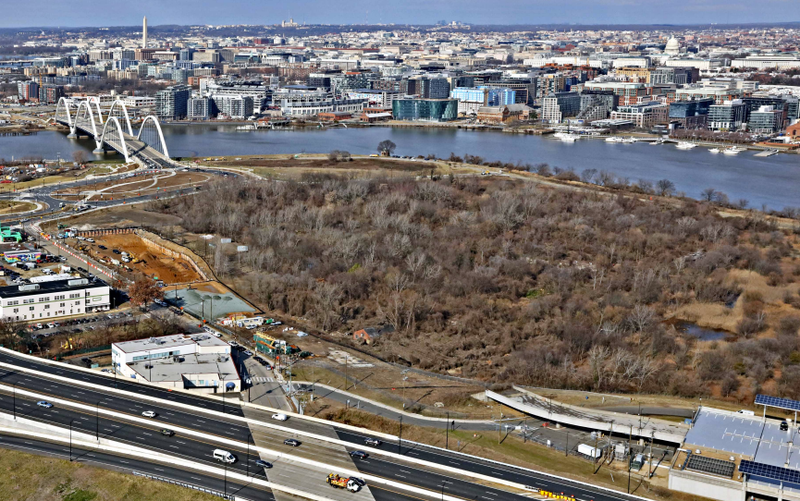Support Housing on Poplar Point

Poplar Point—a 110-acre waterfront site next to the Anacostia Metro—is being reimagined, and your voice can help shape what gets built there. Now is the time to weigh in on the future of this rare, transit-accessible stretch of riverfront in Southeast DC.
The District and National Park Service are considering three land use alternatives, each of which preserves significant parkland and wetlands, while leaving 40 acres available for development.
Take Action
NPS wants feedback on specific aspects of development as well as general comments. Submit comments before Wednesday, May 7 and emphasize the need for a housing-focused, transit-oriented development that is pedestrian and bicycle friendly.
Talking Points
This is a unique opportunity to build a lot more housing in DC, and we encourage you to keep the specific points in mind as you comment:
- DC is in a housing crisis. Rents are rising, home prices are out of reach, and the city isn’t building nearly enough housing to meet demand. DC needs 100,000 more homes in order to meet current demand—and we have a rare chance to build an entirely new neighborhood right next to transit.
- The proposed alternatives should maximize housing units in a mixed-use environment. The new neighborhood should be pedestrian and bicycle friendly, with wide sidewalks, protected bike lanes, and narrow streets to discourage speeding. It is critical the waterfront remains an active and accessible space for people, therefore the district should avoid building wide highway-like roads that encourage speeding and would be difficult to cross on foot or bike.
- Connections to Anacostia Metro Station will be critical. As transit-oriented development, this new neighborhood would be able to promote equitable growth and sustainable travel patterns. It would also be easier for visitors from other neighborhoods to access via transit, and provide a new, much easier transit link to Anacostia Park. The amount of publicly accessible parkland on the site will drastically increase from the existing 14 acres.
The Alternatives
The proposed plan includes three preliminary land use alternatives (presentation here). Each alternative presents different priorities for open space, development, infrastructure, and community development. All alternatives meet a federal law requiring 70 acres of parkland leaving 40 acres for commercial and residential development.
Alternative A - Greenway Connections
Alternative A prioritizes open green connections between wetlands, community park space, and new development nodes. It includes cultural uses at the Point connected to a lively waterfront plaza with development along the waterfront. The open space would be linear and tie the different sections of the development together.
Alternative B - Central Wetlands
This alternative centralizes the wetlands as a feature, with development on all sides including the point. This alternative has an active waterfront lined with development and most of the open parkland concentrated on the east side of the site.
Alternative C - Anchor Use on Point
This alternative emphasizes a major destination anchor on the Point. The wetlands would be located between the anchor use and the Metro station and would be framed by development. Green space would be focused along the waterfront and dispersed around the site. A pedestrian bridge would connect the development to the MLK Jr Ave corridor.
